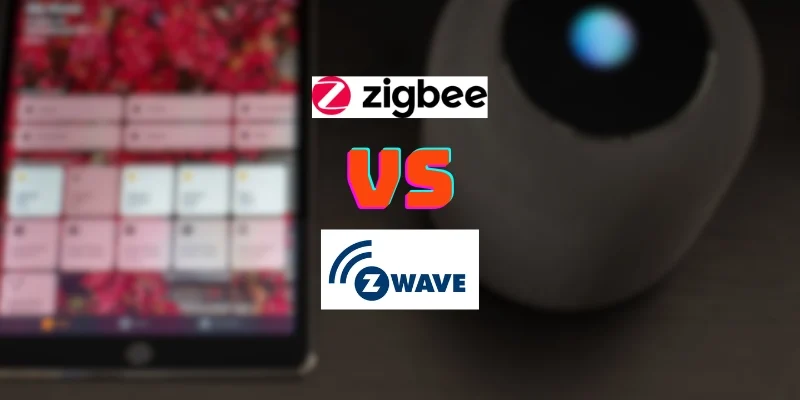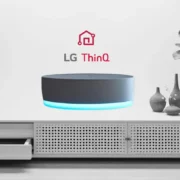In the rapidly evolving world of smart home technology, two names often stand out: Zigbee and Z-Wave. These wireless communication protocols are pivotal in connecting various smart devices, ensuring seamless automation and control. But how do they differ, and which one is right for your smart home setup? This guide will delve into the intricacies of Zigbee vs Z-Wave, helping you make an informed decision.
Table of Contents:
- What is Zigbee?
- What is Z-Wave?
- Key Differences Between Zigbee and Z-Wave
- Compatibility and Interoperability
- Range and Network Coverage
- Security Features
- Power Consumption and Battery Life
- Mesh Networking in Zigbee and Z-Wave
- Scalability and Network Size
- Interference and Reliability
- Existing Products Using Zigbee Protocol
- Existing Products Using Z-Wave Protocol
- Use Cases and Applications
- Pros and Cons
- Future of Zigbee and Z-Wave
- FAQs
What is Zigbee?
Zigbee is a low-power, wireless mesh network standard, primarily designed for home automation. Developed by the Zigbee Alliance, it operates on the IEEE 802.15.4 standard. Known for its efficiency and robustness, Zigbee supports a wide range of devices, from light bulbs to security systems. Zigbee’s open standard means that multiple manufacturers can produce compatible devices, fostering a broad ecosystem.
What is Z-Wave?
Z-Wave is another popular wireless communication protocol, tailored for smart homes. Originating from Zensys and now maintained by the Z-Wave Alliance, it emphasizes reliability and ease of use. Z-Wave operates in the sub-1 GHz frequency, reducing interference from common household devices. Unlike Zigbee, Z-Wave has a more controlled ecosystem, with every device requiring certification to ensure interoperability.
Key Differences Between Zigbee and Z-Wave
While both protocols aim to enhance home automation, several differences set them apart:
| Feature | Zigbee | Z-Wave |
|---|---|---|
| Frequency | 2.4 GHz globally | Sub-1 GHz (varies by region) |
| Range | 20-30 meters indoors | Up to 100 meters in open space |
| Interference | Shares band with Wi-Fi and Bluetooth | Reduced interference |
| Data Rate | 250 kbps | 100 kbps |
| Device Support | More devices per network | Limited devices per network |
Compatibility and Interoperability
When building a smart home, compatibility and interoperability are crucial. Zigbee and Z-Wave devices often require hubs or gateways for communication. Zigbee’s open standard allows for a diverse range of compatible devices, whereas Z-Wave ensures interoperability through a stringent certification process. This certification process ensures that all Z-Wave devices can work together seamlessly, regardless of the manufacturer.
Range and Network Coverage
Z-Wave devices typically offer a range of up to 100 meters in open space, while Zigbee’s range is around 20-30 meters indoors. However, both protocols employ mesh networking, where devices relay signals to extend coverage, enhancing reliability and reach within a smart home.
Security Features
Security is a top priority in smart home networks. Both Zigbee and Z-Wave employ AES-128 encryption to safeguard data. However, Z-Wave’s certification process includes rigorous security standards, ensuring a higher level of security consistency across devices. Zigbee’s security, while robust, can vary depending on the implementation by different manufacturers.
Power Consumption and Battery Life
Efficiency in power consumption is vital, especially for battery-operated devices. Zigbee is known for its low power consumption, making it ideal for sensors and devices that need long battery life. Z-Wave, while also efficient, may consume slightly more power due to its longer range capabilities.
Mesh Networking in Zigbee and Z-Wave
Both Zigbee and Z-Wave utilize mesh networking, a system where devices in the network act as repeaters, forwarding data to other devices. This enhances network reliability and range. In a Zigbee network, up to 65,000 devices can be supported, making it highly scalable. Z-Wave supports fewer devices per network (around 232), but the devices are typically more reliable due to the strict certification process.
Scalability and Network Size
Zigbee:
Zigbee networks can theoretically support up to 65,000 devices, making them highly scalable. This makes Zigbee suitable for large homes or commercial environments where a high number of devices are needed. The open standard of Zigbee allows for a vast array of devices, promoting diversity and innovation in the types of devices available.
Z-Wave:
Z-Wave networks support up to 232 devices. While this is fewer than Zigbee, the devices are often more reliable due to the strict certification process. Z-Wave networks are typically more suited for smaller to medium-sized homes.
Interference and Reliability
Zigbee:
Operating at 2.4 GHz, Zigbee can face interference from other devices like Wi-Fi and Bluetooth. However, it uses a robust mesh network to mitigate this issue, ensuring data gets to its destination even if some paths are blocked.
Z-Wave:
Z-Wave operates in the sub-1 GHz band, which typically experiences less interference than the 2.4 GHz band. This makes Z-Wave networks generally more reliable in environments with many wireless devices.
Existing Products Using Zigbee Protocol
Numerous smart home products utilize the Zigbee protocol, including:
- Philips Hue: Renowned for its smart lighting solutions, Philips Hue bulbs and accessories use Zigbee for seamless control and automation.
- Samsung SmartThings: This popular smart home hub supports various Zigbee devices, providing a unified control platform.
- Amazon Echo Plus: Integrating a Zigbee hub, the Echo Plus allows direct control of Zigbee-compatible devices without additional hubs.
Existing Products Using Z-Wave Protocol
Z-Wave’s reliability and security have led to its adoption in various products, such as:
- Aeotec Smart Home Hub: Known for supporting a wide range of Z-Wave devices, this hub enhances home automation capabilities.
- Yale Smart Locks: Offering robust security features, Yale’s Z-Wave-enabled locks provide smart access control.</ li>
- Fibaro Motion Sensor: A versatile Z-Wave device, it integrates motion, temperature, and light sensing for comprehensive home monitoring.
Use Cases and Applications
Zigbee Applications:
- Lighting Control: Automate and control smart bulbs, switches, and dimmers. Zigbee-enabled lights can be easily grouped and controlled via voice commands or mobile apps.
- Home Security: Integrate Zigbee-enabled cameras, sensors, and alarms. Security systems can benefit from Zigbee’s rapid communication capabilities and low power consumption.
- Energy Management: Monitor and manage energy usage with smart plugs and thermostats. Zigbee’s low power consumption makes it ideal for energy-efficient home automation.
Z-Wave Applications:
- Access Control: Secure your home with Z-Wave smart locks and entry sensors. Z-Wave’s robust security features ensure that access control devices are reliable and secure.
- Climate Control: Optimize heating and cooling with Z-Wave thermostats and environmental sensors. Z-Wave’s reliability ensures consistent performance in climate control systems.
- Home Entertainment: Control multimedia systems and automate entertainment setups. Z-Wave’s lower frequency operation reduces interference, ensuring smooth control of home entertainment systems.
Pros and Cons
Zigbee Pros and Cons
| Pros | Cons |
|---|---|
| High device capacity in a network | Potential interference with Wi-Fi |
| Global frequency standard | Shorter range per device |
| Efficient power consumption | Complexity in network setup |
| Wide device compatibility | Requires a central hub for control |
Z-Wave Pros and Cons
| Pros | Cons |
|---|---|
| Long range and reduced interference | Limited device capacity |
| Robust security standards | Regional frequency variations |
| Interoperability assurance | Slightly higher power consumption |
| Easier to set up and use | Higher cost of devices |
Future of Zigbee and Z-Wave
The smart home industry continues to evolve, with both Zigbee and Z-Wave playing significant roles. Future developments may see increased integration with emerging technologies like Matter, enhancing compatibility and simplifying user experiences. Both protocols will likely continue to innovate, providing better security, efficiency, and interoperability.
Emerging Technologies
Matter: Matter (formerly Project CHIP) is a new standard aiming to unify smart home devices across different protocols. Both Zigbee and Z-Wave are expected to support Matter, enhancing their compatibility with other smart home systems.
Innovations in Security
As smart home devices become more prevalent, both Zigbee and Z-Wave are likely to incorporate more advanced security features. This includes stronger encryption, better authentication methods, and more rigorous certification processes.
Expansion in Device Ecosystem
Both protocols are expected to see an expansion in the types and variety of devices available. This includes more advanced sensors, more integrated home automation systems, and better support for complex automation routines.
FAQs
For more information on specific products using Zigbee and Z-Wave, visit Philips Hue and Aeotec for a comprehensive overview.
By understanding the nuances of Zigbee vs Z-Wave, you can make informed decisions and optimize your smart home for performance, security, and convenience. This comprehensive guide aims to provide you with all the necessary information to choose the best protocol for your smart home needs, ensuring a seamless and efficient smart home experience.












Comments